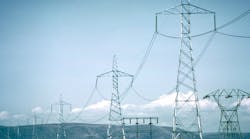The idea of a grid made up of AC and DC components has been around for a very long time. In the early 1980s, the utility I worked for decided to build an HVDC back-to-back converter station. As a result, they sent several of their engineers to a crash course in HVDC theory. I remember a discussion about such a grid in one of the classes, but it was quickly dismissed. The next few years whizzed by and the converter station was built, and I got heavily involved with IEEE’ Power and Energy Society (PES). It was an excellent place to learn more about HVDC and get involved with the maturing technologies.
The next time I heard of the HVDC grid overlaid concept was in the early 1990s. I attended one of the IEEE PES T&D Expo conferences, which included some presentations on the grid of the future. I took part in a session and made a presentation on HVDC technology and met some really interesting engineers. One of them was George Loehr. He made a presentation about the vulnerabilities of the grid to outages and blackouts, and offered a solution. His premise was that the North American grid was too big for its own good. He proposed the Eastern and Western Interconnections be broken up into smaller entities. These smaller interconnections would be interconnected by AC transmission, HVDC transmission. and back-to-back converter stations.
I was intrigued with these ideas and after the session was over, I talked with George for a long time. The technology of the era was limited. We had back-to-back converters, multiple terminal HVDC schemes, and HVDC transmission. We didn’t have voltage source converter technology or DC circuit breakers, but there were sufficient technologies to do it. A couple of years later some folks loosely affiliated with political groups came to engineering conferences. They were making presentations about globally interconnecting all of the continents of the world with AC and DC links. Land masses would be connected by undersea DC cables. This group was really thinking on a big scale, but they were more political-oriented than technical, so I lost track of them.
Moving into the 21st century, the European Union introduced the concept of the European Super Grid interconnecting member countries and the regions around Europe. The basic concept is an overlay HVDC grid integrated with the existing AC transmission grid and HVDC technology. Interestingly, HVDC technology has been steadily improving and maturing to the point this concept is now achievable. Dale Osborn explores the macrogrid in North America in this month’s feature article. I found a really good video on an overview of this concept. Enjoy!


